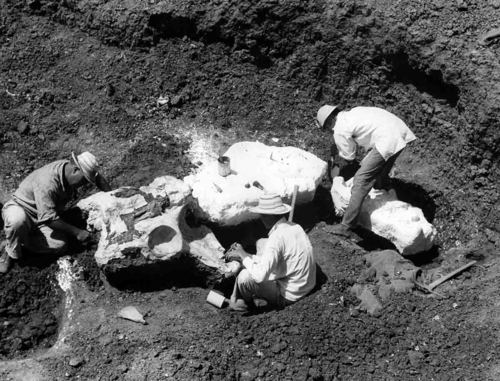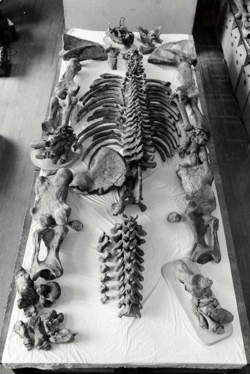theolduvaigorge:The Smithsonian’s Giant Ground Slothsfrom The Smithsonian“Two skeletons of the
theolduvaigorge:The Smithsonian’s Giant Ground Slothsfrom The Smithsonian“Two skeletons of the giant ground sloth, Eremotherium rusconii (Schaub), are exhibited in the Ice Age Hall of the National Museum of Natural History. The larger specimen, shown here, stands about 13 feet (4 meters) tall. An entry in the Museum’s 1953 Annual Report, published shortly after its discovery, asserted that “the skeleton of this huge, uncouth creature promises to be a spectacular addition to the hall of vertebrate paleontology.The giant ground sloth skeletons that greet visitors to the Ice Age Hall are among the most popular exhibits at the National Museum of Natural History. Their bones were among nine tons of fossil material collected in Panama in 1950 and 1951 by Dr. C. Lewis Gazin, then Curator of the Division of Vertebrate Paleontology. The excavation wasn’t easy. Gazin wrote that the fossils were found “in a mud deposit in the vicinity of a large and swampy spring.” The work of protecting the fossils with plaster field jackets was ”made particularly difficult by the continuous battle against water seeping from the spring… The situation greatly jeopardized our use of plaster of paris, but by diligent bailing it was possible to keep the partially prepared blocks of bone and matrix free of excess water sufficiently long for the plaster of paris and burlap bandages to set.” Despite the difficulties, the partial skeletons of between eight and twelve sloths were collected and shipped to the Museum - enough material to piece together two nearly complete skeletons. Most of the “rather impressive surplus” of sloth bones was later returned to the Museo Nacional de Panama in Panama City" (read more).(Source: Smithsonian National Museum of Natural History) -- source link
Tumblr Blog : theolduvaigorge.tumblr.com
#smithsonian#nationalmuseumofnaturalhistory#iceage#paleontology





